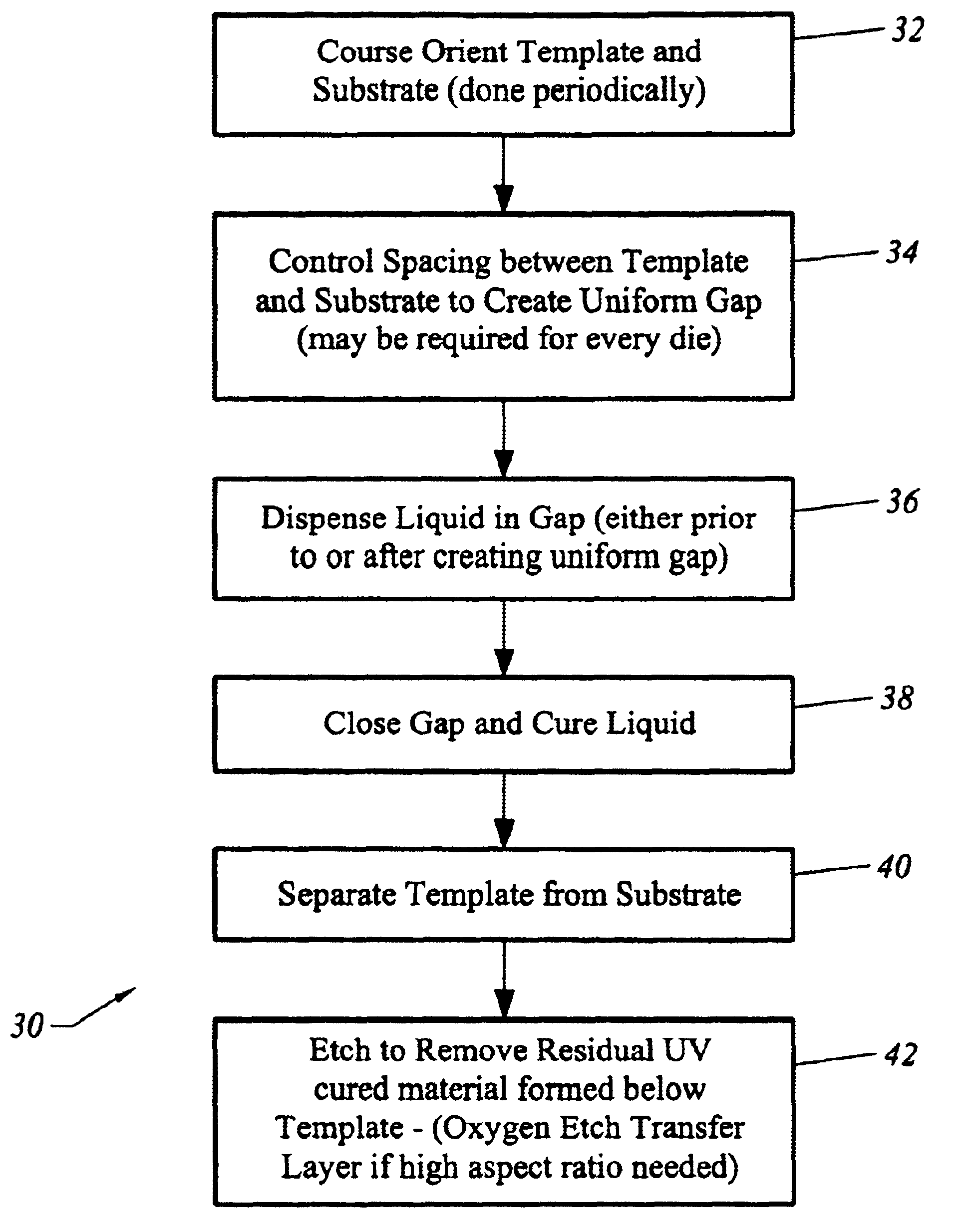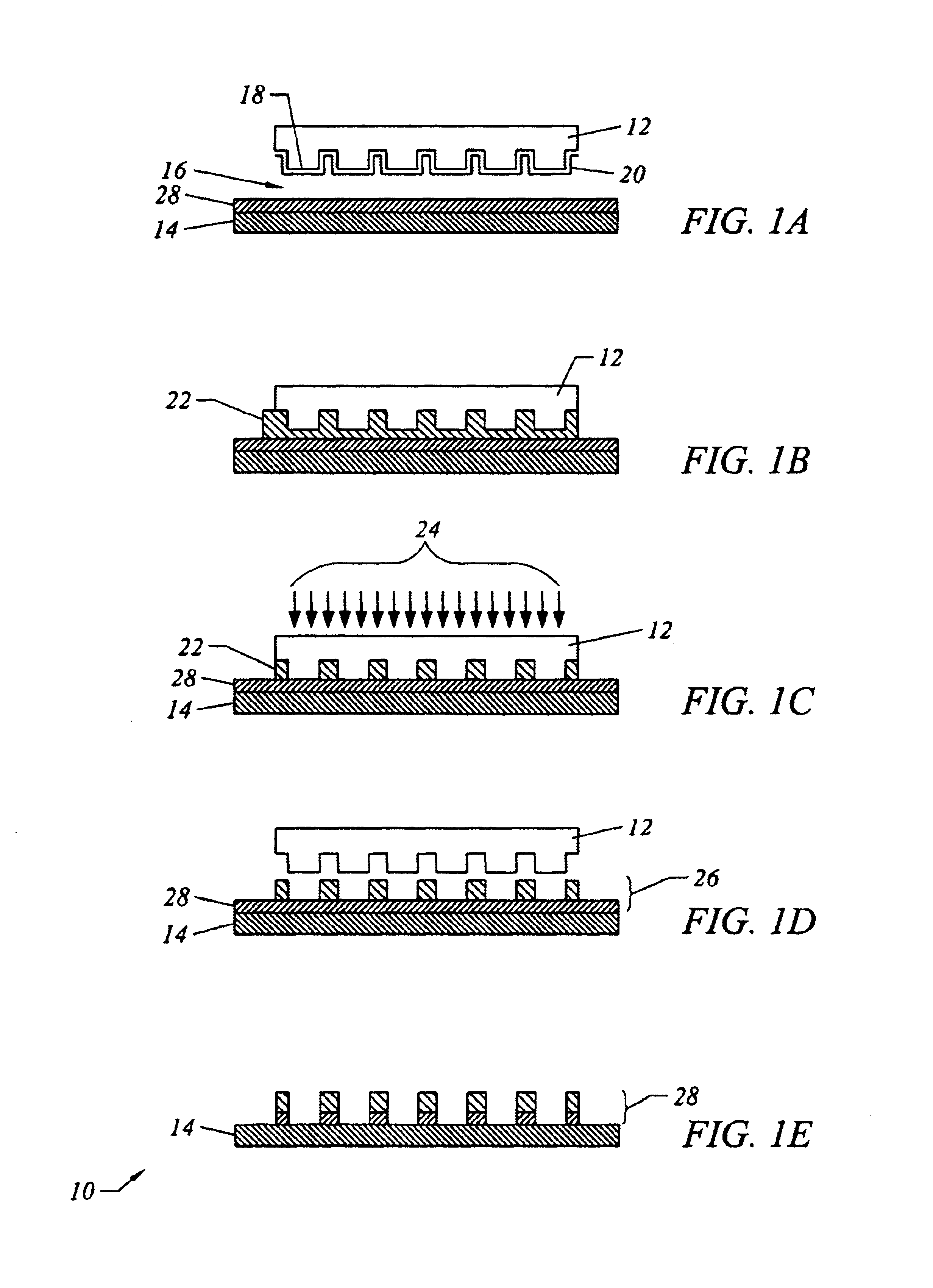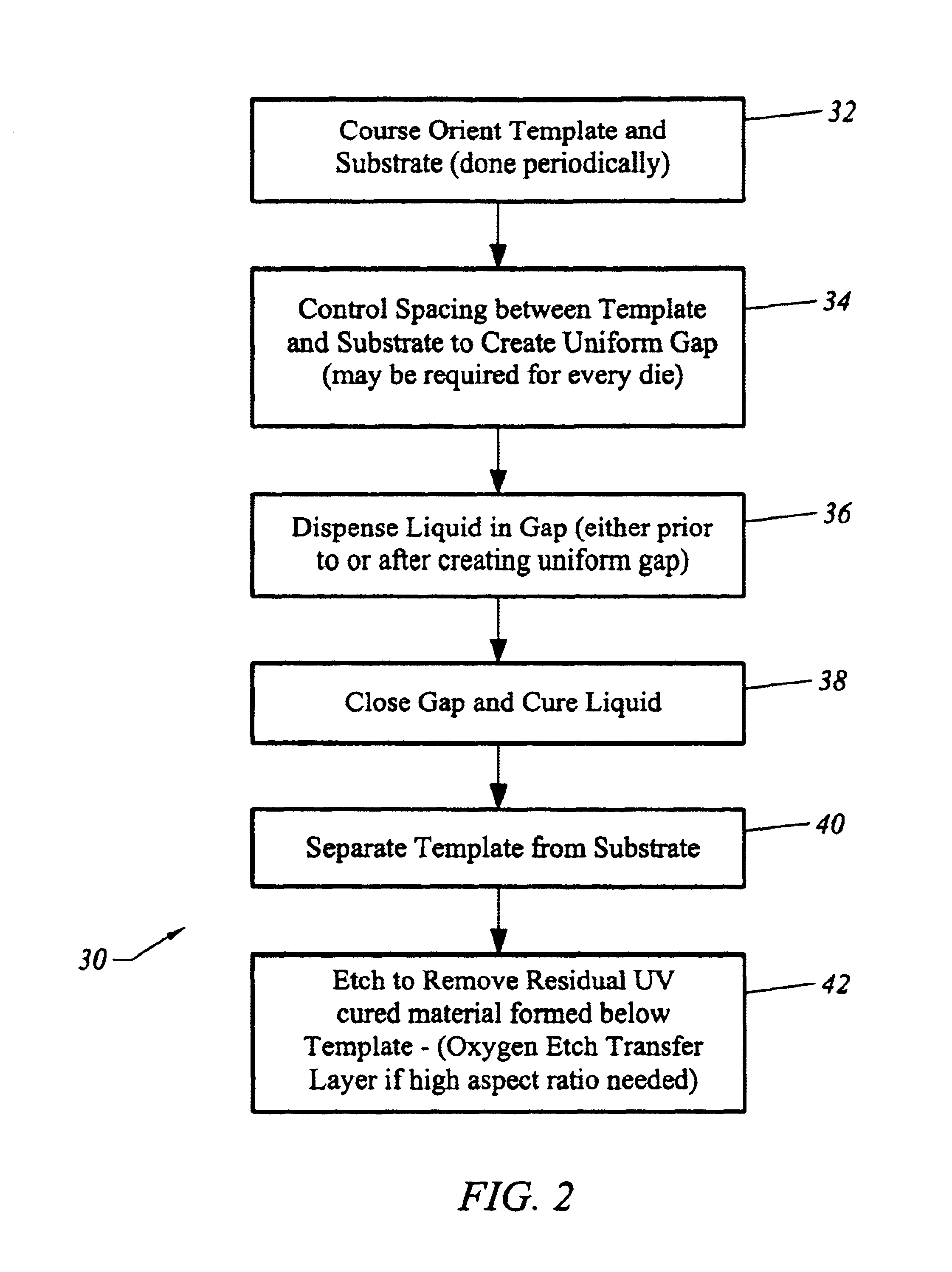Method for fabricating nanoscale patterns in light curable compositions using an electric field
a technology of light curable compositions and nanoscale patterns, which is applied in the direction of electric/magnetic/electromagnetic heating, instruments, photomechanical equipment, etc., can solve the problems of prohibitively expensive equipment and processes, the resolution of methods reaching their limits, and the difficulty of obtaining a light source with sufficient output intensity at these wavelengths of light, etc., to achieve the effect of improving the aspect ratio of structures
- Summary
- Abstract
- Description
- Claims
- Application Information
AI Technical Summary
Benefits of technology
Problems solved by technology
Method used
Image
Examples
Embodiment Construction
[0021]FIGS. 1A thru 1E illustrate an imprint lithography process according to the invention, denoted generally as 10. In FIG. 1A, a template 12 is orientated in spaced relation to a substrate 14 so that a gap 16 is formed in the space separating template 12 and substrate 14. A surface 18 of template 12 is treated with a thin layer 20 that lowers the template surface energy and assists in separation of template 12 from substrate 14. The manner of orientation including devices for controlling of gap 16 between template 12 and substrate 14 are discussed below. Next, in FIG. 1B, gap 16 is filled with a substance 22 that conforms to the shape of surface 18. Preferably, substance 22 is a liquid so that it fills the space of gap 16 rather easily without the use of high temperatures and gap 16 can be closed without requiring high pressures.
[0022]A curing agent 24, shown in FIG. 1C, is applied to template 12 causing substance 22 to harden and assume the shape of the space defined by gap 16 b...
PUM
| Property | Measurement | Unit |
|---|---|---|
| Viscosity | aaaaa | aaaaa |
| Electrical conductor | aaaaa | aaaaa |
| Electric properties | aaaaa | aaaaa |
Abstract
Description
Claims
Application Information
 Login to View More
Login to View More - R&D
- Intellectual Property
- Life Sciences
- Materials
- Tech Scout
- Unparalleled Data Quality
- Higher Quality Content
- 60% Fewer Hallucinations
Browse by: Latest US Patents, China's latest patents, Technical Efficacy Thesaurus, Application Domain, Technology Topic, Popular Technical Reports.
© 2025 PatSnap. All rights reserved.Legal|Privacy policy|Modern Slavery Act Transparency Statement|Sitemap|About US| Contact US: help@patsnap.com



